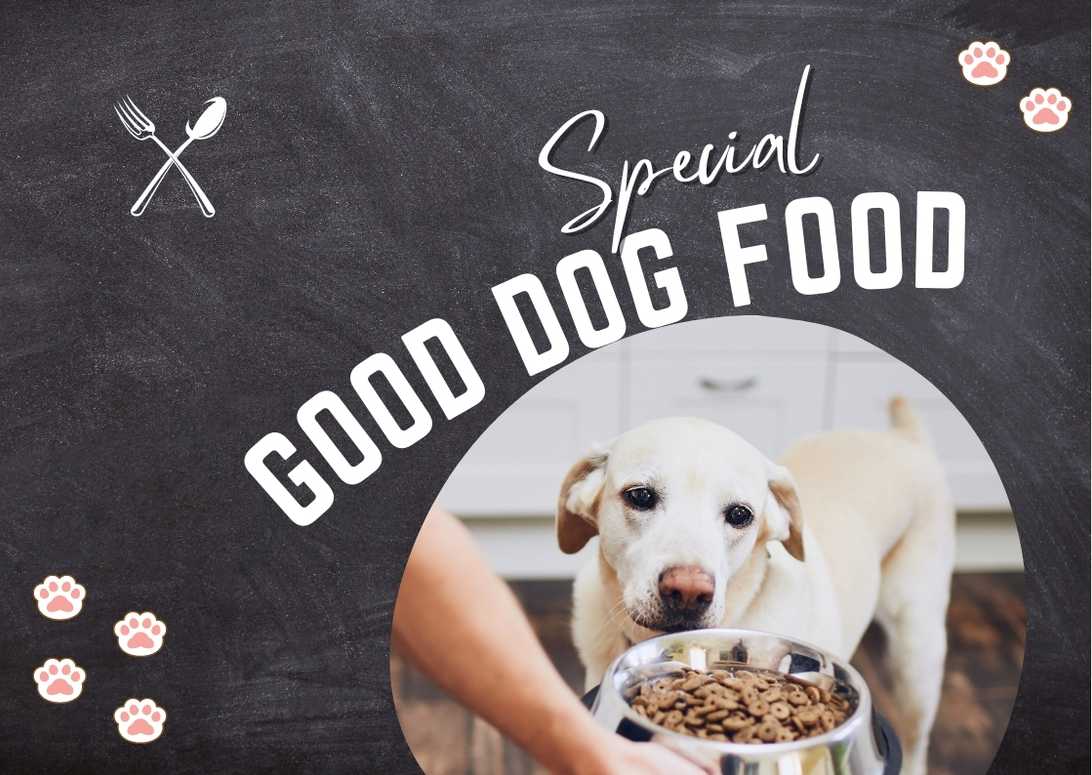How To Train A Goldendoodle
Training my Goldendoodle has been an incredibly rewarding journey. From the moment I brought my furry friend home, I knew that I wanted to give them the best training possible.
In this article, I will share with you some of the most effective methods that professional dog trainers use to train Goldendoodles.
One of the key training methods for Goldendoodles is positive reinforcement. This involves rewarding your pup with treats, praise, or playtime whenever they exhibit desired behaviors. By focusing on positive reinforcement rather than punishment, you can create a positive and enjoyable learning experience for your Goldendoodle.
Additionally, crate training is another important aspect of their development. It provides them with a safe and comfortable space where they can relax and sleep, while also helping with potty training.
Stick around as we dive into these methods in more detail to help you train your Goldendoodle to be a well-behaved and obedient companion.
Important Points
- Positive reinforcement, such as using treats and praise, is an effective training method for Goldendoodles.
- Crate training is important for their development and potty training.
- Consistency in scheduling and routine is crucial for successful training.
- Command training, starting with basic commands and progressing to more advanced ones, is crucial for building obedience.
Training Methods
Clicker training is the most effective way to establish a strong bond with your Goldendoodle and watch them thrive in their training journey. By using a clicker, you can communicate with your pup in a clear and consistent manner. The click sound acts as a marker that tells your dog they’ve done something right, and it’s followed by a reward.
This positive reinforcement method allows your Goldendoodle to understand what behavior you want from them and encourages them to repeat it. Clicker training benefits both you and your furry friend because it creates a fun and engaging learning experience.
When it comes to training stubborn Goldendoodles, patience is key. Some dogs may be more resistant or independent, making the training process challenging at times. However, with the right techniques, even the most stubborn pups can become obedient learners.
One effective technique is incorporating play into training sessions. By turning exercises into games or adding toys as rewards, you can make the experience enjoyable for your Goldendoodle while still teaching them important commands.
In addition to general obedience training, it’s essential to train your Goldendoodle for specific commands like ‘heel’ or ‘leave it’. These commands are not only useful for daily walks but also help ensure their safety in various situations. Consistency and repetition are vital when teaching these specific commands. With practice and positive reinforcement, your furry companion will learn to respond reliably every time.
Transition: Now that we’ve covered some of the methods for establishing basic obedience through clicker training, let’s explore how positive reinforcement plays a crucial role in shaping desired behaviors in our Goldendoodles’ everyday lives. Positive reinforcement not only helps in shaping desired behaviors in our Goldendoodles’ everyday lives, but it also strengthens the bond between us and our furry companions.
Positive Reinforcement
Rewarding your furry friend with treats and affection when they exhibit good behavior will create a special bond between us and bring out their inner superstar. Clicker training benefits are a great way to implement positive reinforcement in training your Goldendoodle. By using a clicker, you can mark the exact moment your pup performs the desired behavior, making it clear to them what they did right. This method helps in shaping their understanding of commands and encourages them to repeat the behavior for future rewards.
In addition to clicker training, using treats as rewards is another effective way to reinforce positive behavior. When your Goldendoodle follows a command or exhibits good manners, give them a treat immediately after they perform the action correctly. This not only motivates them but also strengthens their association between the command and the reward.
Incorporating playtime into training sessions is also essential for positive reinforcement. Goldendoodles are energetic dogs who thrive on physical activity and mental stimulation. By incorporating playtime into their training routine, you make learning enjoyable for them while reinforcing obedience commands through fun activities such as fetch or tug-of-war games.
Teaching basic obedience commands like sit, stay, or come is crucial for building a well-behaved Goldendoodle. These commands provide structure and help establish you as their pack leader while promoting good manners both at home and in public settings.
Addressing behavior challenges in positive ways is an important aspect of positive reinforcement training. Instead of punishing undesirable behaviors, focus on redirecting your Goldendoodle’s attention towards more appropriate actions. For example, if they start chewing on furniture, offer them a chew toy instead and praise them when they choose it over destructive behavior. This approach teaches your dog that there are alternative behaviors that are more rewarding than engaging in unwanted activities.
Transition: Now that we’ve learned about the benefits of positive reinforcement training methods such as clicker training and using treats as rewards, let’s move on to the next step in training a well-behaved Goldendoodle: crate training.
Crate Training
When creating a safe and comfortable space for my furry companion, I imagine a cozy den-like environment that provides him with a sense of security and relaxation. One important aspect of crate training is selecting the right crate size. It should be large enough for my Goldendoodle to stand up, turn around, and lie down comfortably, but not too big that he has extra space to eliminate in one corner and sleep in another.
Additionally, the crate location plays a vital role in successful training. I place the crate in an area where my dog can still feel connected to the family, such as the living room or bedroom. This way, he doesn’t feel isolated or separated from us.
Establishing a consistent crate training schedule is crucial for my Goldendoodle’s success. I make sure to take him outside to relieve himself before placing him in the crate and give him plenty of exercise beforehand to help tire him out. I also set specific times for meals and water intake to regulate his potty breaks. Consistency is key when it comes to crate training.
To ensure effective crate training, there are some common mistakes that I avoid making. First, I never use the crate as a form of punishment; it should always be associated with positive experiences. Secondly, I don’t rush the process by leaving my dog in the crate for extended periods right away. Instead, I gradually increase the duration as he becomes more comfortable and confident inside. Lastly, I resist giving in to whining or barking while he’s in the crate since this may reinforce negative behavior.
Now that my Goldendoodle is comfortable with his safe haven and understands basic obedience commands through positive reinforcement techniques like clicker training mentioned earlier, it’s time to move on to mirror training without skipping a beat!
Mirror Training
Establishing a consistent routine for mirror training, complete with designated practice sessions, will enhance my furry companion’s learning experience.
Mirror training involves using a mirror reflection to help my Goldendoodle recognize and understand their own body language and movements. This technique has several socialization benefits as it helps them become more comfortable with their own appearance and builds their self-confidence. Additionally, mirror training allows for better communication through body language, as my dog can observe and interpret their own actions in real-time.
During mirror training sessions, I can focus on teaching advanced obedience commands such as ‘heel’ or ‘leave it’. By incorporating the mirror reflection, my Goldendoodle can visually see themselves performing the desired behavior, making it easier for them to comprehend what’s expected of them. Furthermore, practicing in front of a mirror helps minimize training distractions that may occur in different environments. The familiar setting of the reflective surface reduces external stimuli and allows my dog to fully concentrate on the task at hand.
Transitioning into the subsequent section about a consistent schedule, integrating mirror training into our daily routine will ensure that both me and my Goldendoodle stay committed to their training progress.
Consistent Schedule
Maintaining a consistent schedule for my furry companion’s training has been proven to increase their ability to learn and retain commands. Studies show that dogs who follow a regular routine are 50% more likely to succeed in obedience training. By establishing a routine for my Goldendoodle, I provide them with structure and predictability, which helps them feel more secure and focused during training sessions.
The benefits of a consistent schedule extend beyond just the training process – it also promotes overall well-being and reduces anxiety in my furry friend.
To maintain a consistent schedule, I make sure to set specific times for activities such as feeding, playtime, exercise, and potty breaks. This not only helps me stay organized but also ensures that my Goldendoodle knows what to expect throughout the day. Additionally, I use positive reinforcement techniques during these scheduled activities to reinforce good behavior and encourage learning. Consistency is key when it comes to training a Goldendoodle, so I try my best to stick to the established routine even on weekends or busy days.
As my Goldendoodle grows and develops new skills, I adapt the schedule accordingly. For example, if they’ve mastered basic commands like sit or stay, I may incorporate more advanced exercises into our daily routine. It’s important to challenge them while still maintaining consistency in their training regimen. By doing so, they continue to build upon their existing knowledge and become well-rounded obedient companions.
Transition: Now that we’ve established the importance of maintaining a consistent schedule for my Goldendoodle’s training, let’s delve into the next step – command training.
Command Training
To effectively teach your furry companion new skills, it’s crucial to implement command training into their daily routine. Effective commands are the foundation of building obedience in your Goldendoodle.
Start with basic commands such as sit, stay, and come, using clear and consistent verbal cues. Use positive reinforcement like treats or praise when they obey the command correctly.
As your Goldendoodle becomes more proficient with these basic commands, you can move on to more advanced command training. Advanced command training involves teaching your Goldendoodle more complex skills such as fetching specific objects or performing tricks. It requires patience and consistency from both you and your pup.
Break down each skill into smaller steps and reward them for each successful attempt. Troubleshooting may be necessary if your Goldendoodle struggles with a particular command. Identify any obstacles or distractions that may be hindering their progress and work on gradually increasing the difficulty level.
Incorporating hand signals along with verbal cues can also enhance your Goldendoodle’s understanding of commands. Pairing a hand signal with a verbal cue helps reinforce the desired behavior and provides an additional visual cue for your pup to follow.
Remember to practice regularly, keep sessions short but frequent, and always end on a positive note.
Transitioning into the subsequent section about ‘training rewards,’ it’s important to note that while command training is essential for teaching new skills, rewards play a significant role in motivating and reinforcing those behaviors.
Training Rewards
Using rewards is a powerful tool in motivating and reinforcing desired behaviors, with studies showing that dogs who receive positive reinforcement during training have higher success rates. When it comes to training a Goldendoodle, using different types of training treats can be highly effective. It’s important to find treats that your dog finds irresistible and are small enough for quick consumption.
This could include store-bought treats or even small pieces of cooked chicken or cheese. Varying the type of treat can also help keep your dog engaged and excited during training sessions.
As your Goldendoodle becomes more proficient in their training, you can start fading out the use of treats. This is done by gradually reducing the frequency of treat rewards while still praising and rewarding them with verbal praise or petting. Eventually, you’ll only need to reward with treats occasionally to reinforce good behavior.
Clicker training can be particularly useful for teaching advanced commands to your Goldendoodle. By associating a clicker sound with a reward, you can communicate more precisely with your dog and shape their behavior effectively.
Incorporating playtime as a reward during training is another great way to motivate your Goldendoodle. Dogs love engaging in fun activities such as playing fetch or going for walks, so incorporating these activities as rewards will make the training process enjoyable for both you and your pup.
Additionally, it’s important to remember that not all rewards have to be food-based treats. Some dogs respond well to verbal praise, belly rubs, or even access to their favorite toys as rewards during training sessions. By finding what motivates and excites your Goldendoodle, you can create an effective reward system that encourages learning and cooperation throughout their training journey.
Some potential rewards to consider may include treats, playtime with other dogs, or even a trip to their favorite park.
Frequently Asked Questions
How long does it typically take to train a Goldendoodle using clicker training?
Using clicker training for goldendoodles has many benefits. It’s an effective method when used properly. The training timeline varies, but with consistency and patience, you can see progress in a few weeks. Some tips include using high-value treats and breaking down commands into small steps. Common challenges may include distractions or fear, but positive reinforcement and gradual exposure can overcome them.
What are some common mistakes to avoid when using positive reinforcement for Goldendoodle training?
When using positive reinforcement for goldendoodle training, it is important to be consistent in your approach. Understanding the role of body language is key, as well as addressing leash pulling issues through positive reinforcement. Incorporating mental stimulation exercises and building a strong bond are also crucial.
Are there any specific crate training techniques that work best for Goldendoodles?
When crate training a Goldendoodle, it’s important to establish a consistent schedule and use positive reinforcement. Introduce the crate gradually, making it a positive space with treats and toys. Use potty training techniques and address separation anxiety with gradual increases in time spent in the crate. Here are some crate training tips: ensure the crate is the right size, make it comfortable with bedding, cover it partially for security, and never use the crate as punishment.
How can mirror training be used to address specific behavioral issues in Goldendoodles?
Mirror training can be used for behavioral modification in Goldendoodles. By using positive reinforcement and specific training methods, mirror training benefits include addressing specific behavioral issues. However, there may be training challenges that require patience and consistency.
Is it necessary to use training rewards such as treats or toys, or can other forms of positive reinforcement be equally effective?
Different forms of positive reinforcement, such as treats or toys, can be equally effective in training a Goldendoodle. However, the importance of consistency, using praise and affection, incorporating playtime into training, and using training games should not be underestimated.
Conclusion
In conclusion, training a Goldendoodle requires patience, consistency, and the use of effective training methods. By employing positive reinforcement techniques such as clicker training, you can create a strong bond with your furry friend while teaching them desired behaviors.
Crate training is also crucial for their development, providing them with a safe space and promoting good behavior when left alone. Mirror training allows your Goldendoodle to learn from their own reflection, enhancing their social skills and self-awareness.
Establishing a consistent schedule is essential for potty training success. By sticking to regular feeding times and bathroom breaks, you can help your Goldendoodle understand where and when they should relieve themselves. Additionally, command training enables you to communicate effectively with your dog, ensuring they respond promptly to your instructions.
Finally, using rewards like treats or praise during the training process reinforces positive behaviors and encourages continued progress.
So imagine this: an obedient Goldendoodle by your side, eagerly following commands in sync with your every move. With these tried-and-true methods and some dedication on your part, this vision can become a reality. Remember that building a strong foundation through consistent training will lead to a well-behaved companion who brings joy and harmony into your life.
So go forth and train your Goldendoodle with love and patience – the results will be truly rewarding!







